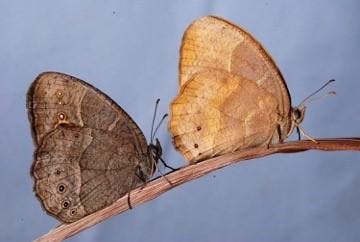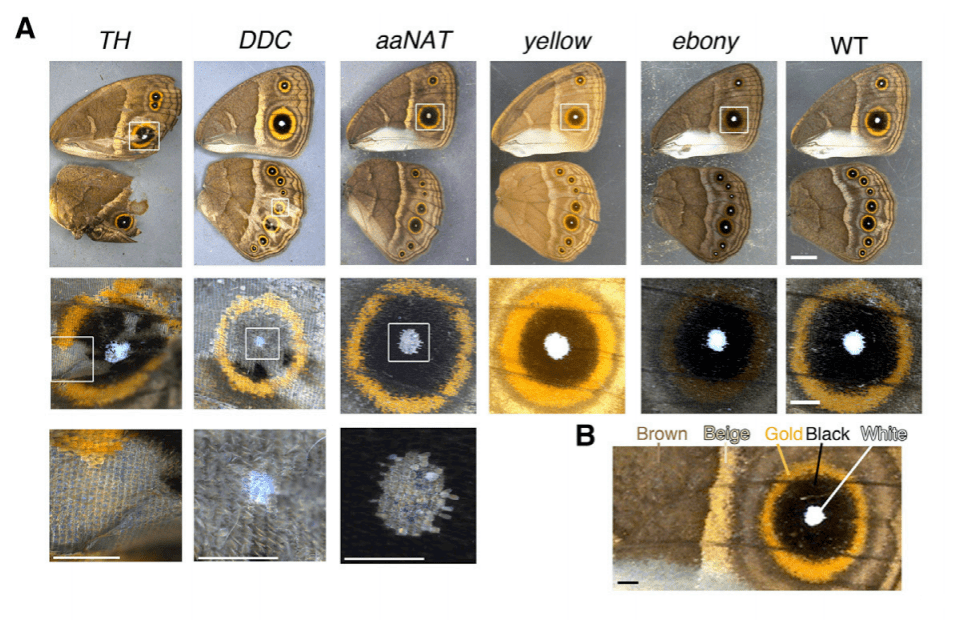Butterflies have complex color and scale patterns that allow them to camouflage, attract mates, or warn predators. Researchers used CRISPR/Cas9 to study the genes of one butterfly species to see how they contribute to the wing color and scale structure. Surprisingly, they found that the scale and color of the wings are linked to the same genes.
The squinting bush brown butterfly, Bicyclus anynana, comes from East Africa and is typically a dark brown color. A postdoctoral fellow at the National University of Singapore, Yuji Matsuoka, disabled five of the butterfly’s pigment genes with CRISPR/Cas9. CRISPR is a new gene editing system that is capable of adding and disabling genes to different organisms easily and cheaply. The mutations not only changed the color of the butterfly to a light brown/yellow, but also altered the wing scale structure.
“Our research indicates that the color and structure of wing scales are intimately related because pigment molecules also affect the structure of scales,” says senior author Antónia Monteiro, a biologist at the National University of Singapore’s Faculty of Science and Yale-NUS College in Singapore. “Some end products of the melanin pathway, which produces butterfly wing pigments, play a role in both scale pigmentation and scale morphology.”
One mutation prevented the manifestation of the pigment dopa-melanin and it also caused an extra sheet of chitin to form horizontally on the upper surface of the wing scale. However, when the different pigment dopamine-melanin was mutated, there were suddenly vertical blades of chitin. This work shows that butterfly color and scale structure are intimately linked and seem to work together. These fives genes could constrain the evolution of a butterfly’s color.

The wildtype butterfly (left) and with mutations (right).
Image credits: William H. Piel and Antónia Monteiro.
The morphology of wing scales is very different between butterfly species. Melanin seems to be an important molecule in this process and it is likely not the only one. These results also help us to know more about the development and evolution of butterfly wing scales.
“Some butterflies can have vivid hues just by having simple thin films of chitin on their scales that interfere with incoming light to create shades known as structural colors without producing corresponding pigments,” says Monteiro. “Light beams reflecting off the top and bottom surfaces of the chitin layer can interfere with each other and accentuate specific colors depending on the thickness of the film, so our results might be interesting in this context.”
One interesting application of this result could be to bioengineer bright colors based on butterfly scales in the future. Above all, this discovery helps us to better understand butterfly coloration and wing scale structure.
Journal reference: Matsuoka et al. 2018. Melanin Pathway Genes Regulate Color and Morphology of Butterfly Wing Scales. Cell Reports.










